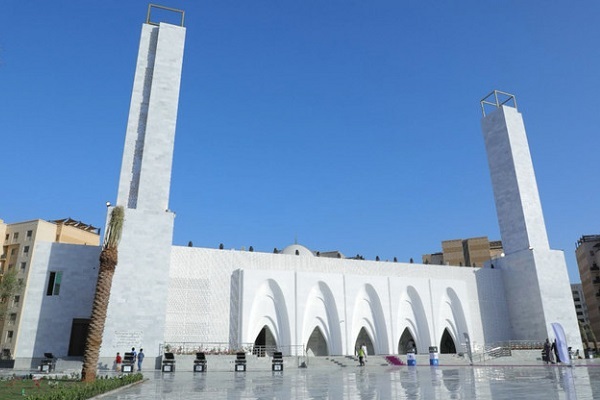World's First 3D-Printed Mosque Opens in Jeddah

The mosque, named after the late Abdulaziz Abdullah Sharbatly, is located in Al-Jawhara suburb of Jeddah and covers an area of 5,600 square meters.
It was constructed by Fursan Real Estate, led by Saudi businesswoman Wajnat Abdulwahed, using 3D printers from Guanli, a Chinese manufacturer of three-dimensional printing technology.
The project is part of the National Housing Co.'s portfolio and was unveiled in the presence of senior government officials and business leaders.
The mosque's design reflects the architectural heritage of Hejazi culture and the values of the King Salman Urban Charter, Arab News reported on Friday.
It also aims to create a sense of tranquility and hospitality among worshippers. The mosque's shape is circular and oriented towards the qibla, the direction of prayer.
Read More:
The building's mass, natural light, entrances, gates, and exterior facades were carefully designed to enhance the mosque's identity. The minarets were made to be distinctive landmarks in the neighborhood. The open outdoor area was inspired by Hijr Ismail, the semi-circular wall near the Kaaba in the Grand Mosque, and serves as an extension for worshippers during Friday prayers, taraweeh prayers in Ramadan, and Eid.
Abdulwahed, the widow of Sharbatly and the head of Fursan Real Estate, said that the construction of the mosque using 3D printing technology was a complex and precise process that required a different approach than traditional methods.
She said that the mosque's design had to preserve the essence of mosques while also presenting them in a contemporary format. She added that the mosque was a tribute to her late husband.
Read More:
The mosque is the first of its kind in the world to use 3D printing technology, which is a promising innovation for the future of architecture and design.
3D printing allows digital models to be transformed into physical structures through additive manufacturing processes, which reduce material waste and increase efficiency in the construction industry.
Source: Agencies



